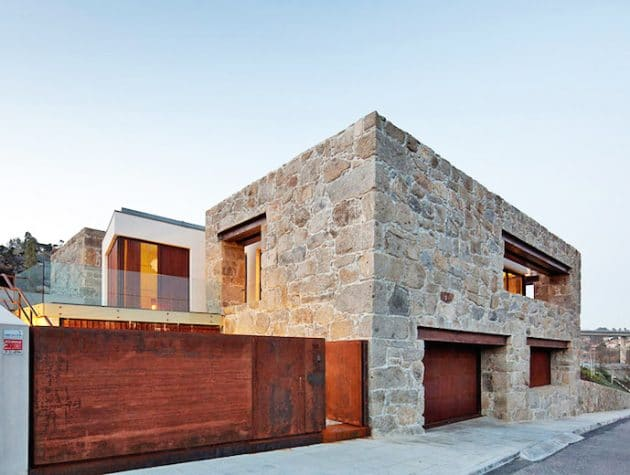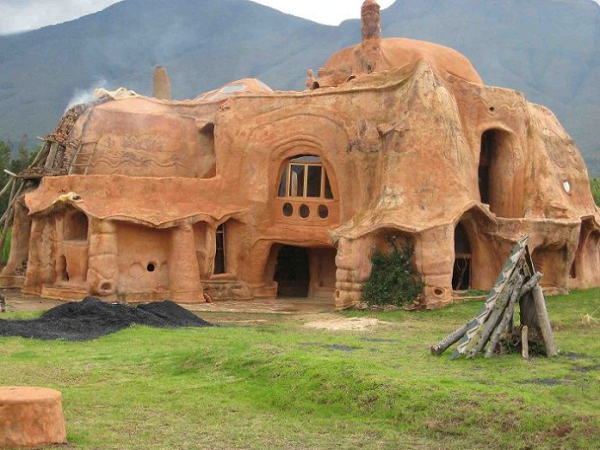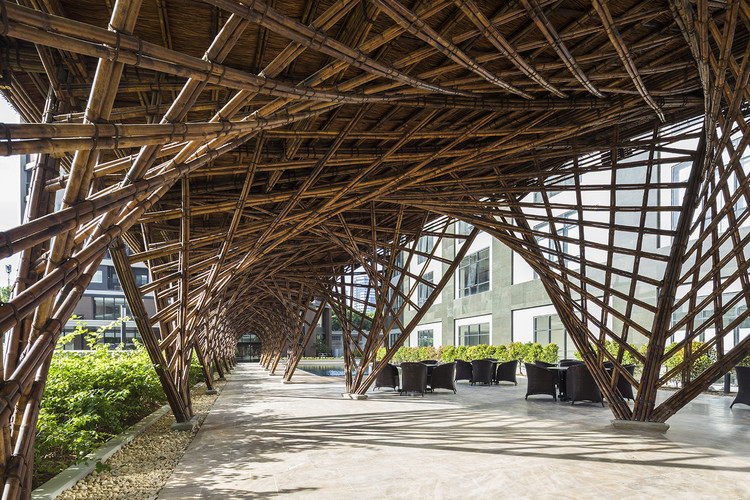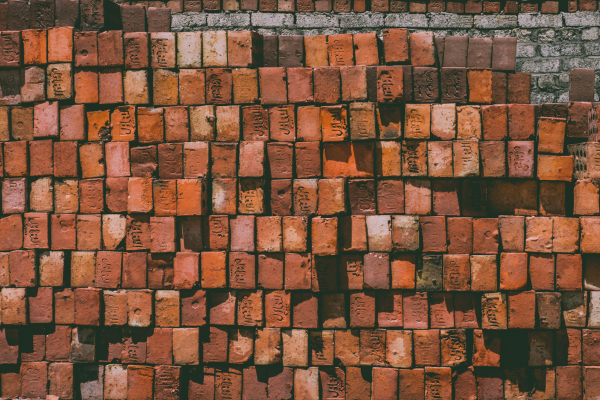Modern architecture, which emerged in the 20th century, is fundamentally characterised by its emphasis on functionality and technical considerations in design. It can also be seen as a progressive development of the neoclassical architectural traditions of the 19th century.
One of the key principles of sustainable architecture is to design buildings that are energy efficient. This involves using passive design strategies, such as orienting buildings to maximise natural light and ventilation and utilising energy-efficient materials and systems. Additionally, renewable energy sources, like solar panels and wind turbines, are often integrated into the design to reduce a building's reliance on fossil fuels.
But sustainable architecture isn't just about energy. It also addresses water conservation, waste reduction, and the use of eco-friendly materials. It's a comprehensive approach that considers the broader environmental and social context in which a building exists.
Understanding sustainable living
What does it mean to embrace sustainable living? Sustainable living entails the prudent utilisation of resources to ensure they remain available for future generations. It's also the pursuit of a thriving environment where communities can enjoy employment opportunities, housing, educational institutions, retail outlets, and various services without causing harm to the natural world.
Sustainable living involves a deliberate effort to minimise one's ecological footprint, with a focus on preserving the planet for both current and forthcoming generations.
Initially, sustainable building practices often found expression in modest-sized structures, such as weekend retreats or rural homesteads. These environments were conducive to the adoption of economically viable renewable energy sources like solar panels, wind turbines, and geothermal heat pumps.
Why sustainable architecture?
The primary objective of sustainable architecture is twofold. Firstly, it aims to conserve energy through the use of low embodied energy materials and efficient heating and cooling systems. This includes harnessing natural light, implementing passive cooling methods such as thermal mass and ventilation, and harnessing renewable energy sources like solar panels for electricity generation.
Secondly, sustainable architecture strives to minimise environmental impacts by reducing water consumption through the utilisation of water-efficient appliances and greywater recycling in irrigation systems. It also involves designing structures that can adapt to diverse climates, employing insulation materials and renewable building resources that are both cost-effective and eco-friendly.
The cornerstone of sustainable architecture is the question of sustainability itself. It encompasses the three dimensions of architecture: social, economic, and environmental.
Environmental sustainability explores how buildings can be designed to minimise energy consumption and the use of natural resources. This can be achieved through efficient building systems, top-notch insulation, passive solar heating, green roofs, and various techniques that mitigate the impact of climate change.
Incorporating sustainable features into the design also enhances the quality of life for occupants. This includes the use of efficient lighting fixtures and space-saving kitchen layouts. Green design ensures that what we build today will remain sustainable in the years to come, meeting current ecological standards without compromising future utility.
The importance of green building practices
The importance of green building practices in the modern world cannot be overstated. As we face pressing environmental challenges, such as climate change and resource depletion, it is imperative that we shift our approach to construction. Sustainable architecture offers a path forward, and its significance is underscored by several key factors.
1. Environmental impact reduction: Traditional construction methods are resource-intensive and often result in significant waste and pollution. Green building practices aim to minimise these negative environmental impacts by using materials and techniques that are less harmful to the planet.
2. Energy efficiency: Sustainable architecture prioritises energy efficiency, which not only reduces a building's operational costs but also decreases its carbon footprint. Energy-efficient buildings consume less energy, which in turn reduces greenhouse gas emissions.
3. Enhanced quality of life: Sustainable buildings are designed with the occupants' well-being in mind. Features like improved indoor air quality, access to natural light, and thermal comfort not only contribute to a better living or working environment but also promote health and productivity.
4. Economic benefits: While there may be initial investments in sustainable architecture, the long-term economic benefits are substantial. Lower energy bills, reduced maintenance costs, and increased property value are just a few of the advantages that come with green building practices.
5. Regulatory and market trends: Governments around the world are increasingly implementing regulations that promote sustainable construction, offering incentives and certifications for eco-friendly buildings. In addition, there is a growing demand for sustainable buildings among environmentally conscious consumers.
Understanding green buildings and their significance in sustainable urban planning
In contrast to the commuter towns that emerged from the Industrial Revolution and 20th-century developmentalism, contemporary urban planning is embracing new trends, with a focus on eco-neighbourhoods. These urban initiatives aim to curtail environmental impact and inspire responsible living among citizens. Central to this shift is the construction of buildings and infrastructure using sustainable technologies and materials.
A green or sustainable building is one designed and constructed to either uphold or enhance the overall environmental quality of its surroundings. To achieve this, it's imperative to attain a high level of efficiency, effectively reducing the consumption of energy, water, and other resources, thereby lessening pollution.
Eco-friendly materials transforming modern design
Green building goes beyond aesthetics; it's about using predominantly natural materials and renewable resources in construction. These eco-friendly structures not only look fantastic but also come with design perks like improved thermal efficiency and integrated safety features.
But here's an interesting twist - your choice of materials can influence your home insurance policy. Some forward-thinking insurers may even offer you a 5 to 10 percent reduction in premiums if you adopt natural building practices that cut down your home's energy consumption. However, it's worth noting that insuring unique or unconventional homes can be a bit of a challenge, and in some cases, it might even prove elusive.
To dive deeper into these natural building resources, their associated benefits, and the ins and outs of home insurance considerations for each type, read on below.

1. Stone
Living in a stone structure offers both low maintenance and eco-friendly advantages. Additionally, any surplus stone from the construction can be creatively repurposed for home finishings like countertops and tiles.
When it comes to stone, there's more than meets the eye. Here's why it's an excellent choice:
-
Environmental Friendliness: Building with stone doesn't introduce harmful chemicals or toxins into your home. Since it's a natural resource, you don't deplete other materials during its production. This not only makes it environmentally responsible but also minimises the need for additional paint and finishing.
-
Reliability: Stone structures are renowned for their durability and resilience. They excel in various climates, are fire-resistant, and tend to withstand natural disasters, providing peace of mind for homeowners.
-
Low Maintenance: Stone's innate durability translates into minimal maintenance and cleaning over time, resulting in lower upkeep costs for homeowners.
-
Durability: Stone's robust properties make it an ideal choice for different climates and ensure resistance to fires and various natural disasters.

2. Cob
If the idea of crafting your eco-friendly home appeals to you, cob might be the perfect choice. This natural building material is known for its user-friendly nature, making it accessible even for beginners. Cob comprises a mixture of earthy components like soil, sand, straw, and sometimes lime, creating a harmonious blend with nature.
Here's why cob homes stand out:
-
Whimsical Charm: Cob homes exude a whimsical and enchanting aura, often resembling the cosy dwellings seen in stories like the Hobbit homes from Lord of the Rings. They possess a unique, organic charm that sets them apart.
-
Construction Considerations: It's essential to note that cob homes require more time to build compared to traditional constructions. Additionally, you'll want to maintain appropriate humidity levels in your cob dwelling to prevent mold and related health issues.
-
Cost-Effective: Constructing a cob home can be remarkably economical, often amounting to just a fraction of the cost of traditional builds.
-
Energy Efficiency: Cob's natural properties slow down heat transfer, helping maintain stable internal temperatures and consequently reducing monthly energy bills for homeowners.

3. Bamboo: Crafting the bohemian dream home
Have you ever envisioned living in a bamboo treehouse? Your dreams may be onto something remarkable. While the idea of utilising bamboo as a construction material dates back centuries, this distinct wood is experiencing a resurgence in popularity, thanks to its eco-friendly attributes and enchanting bohemian aesthetics.
Here's why bamboo is making waves:
-
Strength and Style: Bamboo's remarkable strength and unique aesthetic appeal can help you create a one-of-a-kind home that stands out from the crowd.
-
Sustainability: Bamboo, one of the planet's fastest-growing plants, is inherently sustainable. Its rapid growth rate makes it a responsible choice for environmentally conscious builders.
-
Durability: Bamboo boasts impressive tensile strength, surpassing that of steel, and it can withstand compression even better than concrete.
-
Lightweight: Thanks to its hollow sections, bamboo is not only durable but also lightweight, making it easy and cost-effective to transport to construction sites, thereby saving money during the building process.

4. Adobe bricks
One of the enduring and eco-friendly building materials still in use today is adobe brick. With a rich history in the Americas and the Middle East, adobe bricks are crafted from a blend of clay and straw. Like their natural counterparts, adobe bricks offer effective insulation, ensuring consistent home temperatures.
The advantages of adobe brick:
-
Noise Control: Adobe homes offer a natural barrier to sound transmission, providing homeowners with a serene living environment. This can be a particularly appealing feature for homes situated near busy streets or bustling business centres.
-
Design Flexibility: Sun-dried mud bricks can be readily manipulated, cut, and transformed, empowering architects to explore creative shapes and angles when designing adobe homes, resulting in truly unique and distinctive structures.

5. Upcycled plastic
Every day, nearly 8 million pieces of plastic go into the ocean. Plastic is terrible for wildlife and the environment when it’s cast away as waste, but recycled plastic sheets and plastic lumber may provide sustainable building solutions with less impact. It’s worth noting that plastic builds are generally considered non-standard properties, making home insurance more difficult to obtain.
Benefits of upcycled plastic:
-
Speed: Recycled plastic bricks can be laid much faster than brick, and piled in a Lego-like fashion.
-
Nontoxic: While traditional lumber must be sprayed with a preservative sealant that contains toxins, plastic polyethylene doesn’t need to be.
The future of green architecture
In conclusion, sustainable architecture is not just a trend; it's a necessity in the modern world. Green building or green architecture practices and eco-friendly materials are transforming the way we design and construct buildings, with a focus on reducing our environmental impact and improving the quality of life for current and future generations. Embracing sustainable architecture is not only a responsible choice; it's a blueprint for a more environmentally conscious and economically viable future. As our society becomes increasingly aware of the importance of sustainable living, the adoption of these practices in modern design is more critical than ever.
Explore sustainable living with Dualchas
At Dualchas, we've been pioneering a renaissance in Highland architecture since 1996. Our commitment to context-inspired design has proven its success in various locations. Now, it's your turn to join us toward sustainable living and eco-friendly construction.
Discover how our expertise and eco-conscious designs can transform your dream home. Get in touch today and let's bring your vision to life while making a positive impact on the environment!
Contact Dualchas for Sustainable Architecture Excellence.
